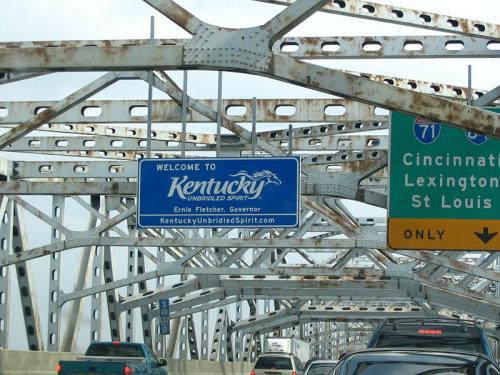 Oh my, this is good religion reporting -- that was my first thought when I got about halfway through the first in Laurie Goodstein's New York Times series on overseas priests serving Catholic parishes in the United States.
My second thought was, of course: why is it so good?
Oh my, this is good religion reporting -- that was my first thought when I got about halfway through the first in Laurie Goodstein's New York Times series on overseas priests serving Catholic parishes in the United States.
My second thought was, of course: why is it so good?
Goodstein does something increasingly rare in these days of budget constraints, reporting a story about a national trend from the local point of view. Kudos to her editors for giving her the time to do it.
Digging well below the headlines in this series, she "get religion" in a very basic way -- giving us a picture of clergy and congregants grappling with pastoral issues that matter to them on a daily basis.
Are Fr. Oneko's sermon's too long? Will a primarily white congregation accept a priest of color? What happens if a foreign priest has behavioral problems?
Most of us are aware of the shortage of Catholic seminarians and priests. But readers may not know (unless they attend parishes with foreign-born priests) that the "face" of the Catholic Church is becoming much more diverse:
One of six diocesan priests now serving in the United States came from abroad, according to "International Priests in America," a large study published in 2006. About 300 international priests arrive to work here each year. Even in American seminaries, about a third of those studying for the priesthood are foreign-born.
Goodstein jump starts her story by taking us to directly to Kentucky and the plight of a rural diocese:
Sixteen of the Rev. Darrell Venters's fellow priests are running themselves ragged here, each serving three parishes simultaneously. One priest admits he stood at an altar once and forgot exactly which church he was in.
So Father Venters, lean and leathery as the Marlboro man --a cigarette in one hand and a cellphone with a ring tone like a church bell in the other -- spends most of his days recruiting priests from overseas to serve in the small towns, rolling hills and farmland that make up the Roman Catholic Diocese of Owensboro.
He sorts through e-mail and letters from foreign priests soliciting jobs in America, many written in formal, stilted English. He is looking, he said, for something that shouts: "This priest is just meant for Kentucky!"
"If we didn't get international priests," he said, "some of our guys would have had five parishes. If one of our guys were to leave, or God forbid have a heart attack and die, we didn't have anyone to fill in."
The writer doesn't avoid details like Venter's cigarettes, a fully stocked bar at a local retreat, or the casino some priests visit -- but neither does she dwell on them. They serve to illustrate and humanize the story she is telling.
She also explores the tensions that may arise when overseas clergy minister in American Catholic parishes.
Are they coming to America so that they can support their family at home?
From a global perspective --what happens when clergy leave countries, like Mexico and those in Central and South America, where the clergy shortage is even worse?
Most of the priests serving in Owensboro support Father Venters's recruiting drive, but some voice doubts. The Rev. Dennis Holly, with the Glenmary Home Missioners, an American order dedicated to serving regions that are not predominantly Catholic, like Western Kentucky, believes America is essentially taking more than its share of resources, behaving like a mere consumer by spending money to attract priests from countries that have even greater shortages. He thinks the Catholic church should place priests where they are needed most around the globe.
"We experience the priest shortage, and rather than ask the question, 'Why do we have a priest shortage?' we just import some and act like we don't have a priest shortage," Father Holly said. "Until we face the issue of mandatory celibacy and the ordination of women, we can't deal with the lack of response to the invitation to priesthood."
But Father Venters is a pragmatist. He said those were good questions, "but, in the meantime, you have to respond to the needs of people."
I'd be interested in knowing whether it's solely the clergy belonging to a religion order (and less constrained by diocesan loyalties) who are asking these questions, or whether parochial clergy are also concerned.
One missing thread here that also bothered me --we learn a lot about the entrepreneurial Venters, but where is the Bishop? Surely his role in recruiting clergy goes beyond providing a full stocked retreat bar.
The second part of the series tells the story of the Rev. Chrispin Oneko, a priest from Kenya who takes a post in the Kentucky town of Oak Grove. If anything it is an even more compelling read.
Why? Because, in the mundane details of religious life, it offers readers a place to find themselves -- and to understand the dilemmas of a foreign priest grappling with American Catholic culture.
In the third article, published today, Goodstein traveled to India to look at the clergy shortage from the viewpoint of a diocese that once sent clergy to other countries, but now might wish to keep them.
By including that perspective, Goodstein prompts her readers to view the Catholic priest shortage from a global perspective as well as a local one --something I wish more religion stories would do. It's terrific that the Times had the resources, and the inspiration, to do it this time.
Picture of Kentucky highway is from Wikimedia Commons
